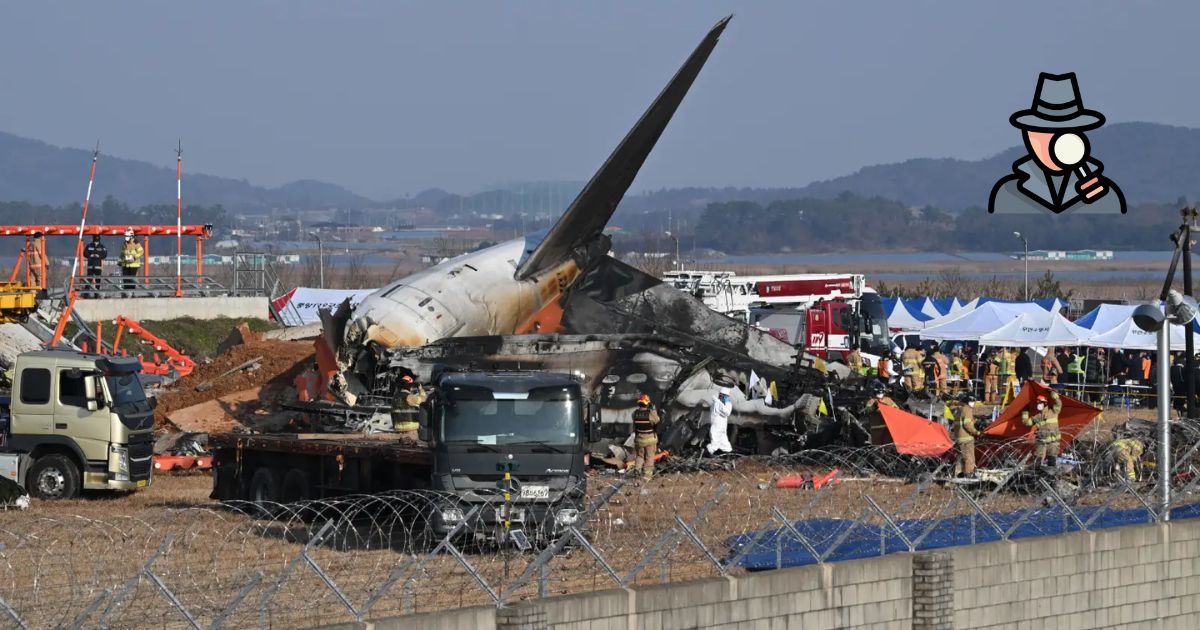
Airplane crashes are rare, but when they happen, they shock the world. Recently, South Korea experienced a tragic airplane crash that left many questions unanswered. This article will break down the events, the investigation, and what we can learn from this tragedy in simple terms.
What Happened?
The South Korean airplane crash occurred on [insert specific date if known]. The plane, operated by [insert airline name], was on its way from [departure city] to [destination city]. Unfortunately, it never reached its destination. Reports indicate that the aircraft encountered [describe weather conditions, mechanical failures, or other factors if known] before crashing.
The crash site was located in [specific area], and rescue teams arrived as quickly as possible. Despite their efforts, many lives were lost, and others were left injured. Families of passengers and crew members were devastated as they awaited updates.
Immediate Response
As soon as the crash was reported, emergency teams sprang into action. Firefighters, paramedics, and search-and-rescue teams worked tirelessly to locate survivors and recover the remains of those who tragically lost their lives. The crash site was described as chaotic, with debris scattered over a large area.
Local authorities set up emergency hotlines for families seeking information about their loved ones. The airline also promised to cooperate fully with the investigation and provide support to affected families.
The Investigation Begins
Airplane crashes are complex, and understanding what went wrong takes time. In South Korea, aviation authorities, along with international experts, launched an investigation to uncover the cause of the crash.
Black Box Analysis
One of the most crucial pieces of evidence in any plane crash investigation is the black box. The black box is a device that records flight data and cockpit conversations. Investigators located the black box at the crash site and sent it to a lab for analysis.
Weather Conditions
Weather can play a significant role in airplane crashes. Investigators studied reports of the weather during the flight. Was there heavy rain? Strong winds? Poor visibility? These factors might have contributed to the crash.
Mechanical Failures
Airplanes are highly sophisticated machines, but they can still experience mechanical problems. Investigators checked the maintenance records of the plane to see if there were any unresolved issues before the flight.
Pilot Error
Pilots are trained to handle emergencies, but they are still human. Investigators reviewed the actions of the pilot and co-pilot to determine if any mistakes were made.
Lessons Learned from Past Crashes
Unfortunately, airplane crashes have happened before. Each crash teaches us something new about safety. Investigators often compare current crashes with past ones to identify patterns and solutions.
For example:
- Better Technology: Past crashes have led to advancements in airplane technology, like improved navigation systems and stronger materials.
- Stricter Regulations: Aviation authorities worldwide introduce new rules after major crashes to prevent similar incidents.
- Improved Training: Pilots and crew receive better training to handle emergencies.
Impact on Families and Communities
The families of those involved in the crash are the ones most affected. Losing a loved one in such a sudden and tragic way is unimaginable. Communities across South Korea and around the world have come together to offer support. Vigils, memorials, and fundraisers have been organized to honor the victims.
The airline has promised to provide compensation to the families of the victims. However, no amount of money can replace a loved one.
Safety Tips for Travelers
Although airplane crashes are extremely rare, it’s natural to feel anxious about flying. Here are a few safety tips for travelers:
- Pay Attention to Safety Instructions: Listen carefully to the flight attendants during the safety briefing.
- Know Your Exits: Locate the nearest emergency exit as soon as you board the plane.
- Follow Airline Rules: Keep your seatbelt fastened when seated and follow all instructions from the crew.
Moving Forward
South Korea and the global aviation community will learn from this tragedy to make flying even safer. The investigation is ongoing, and more details will emerge in the coming weeks.
While we mourn the loss of lives, it is essential to focus on preventing similar incidents in the future. Aviation is still one of the safest modes of transportation, and every effort is being made to ensure it stays that way.
Conclusion
The South Korean airplane crash is a somber reminder of the fragility of life. It has brought grief to families and communities but has also highlighted the resilience of rescue teams, investigators, and support systems. As the investigation continues, the world watches closely, hoping for answers and solutions to prevent such tragedies from happening again.
Our thoughts are with the victims, their families, and everyone affected by this heartbreaking event.






